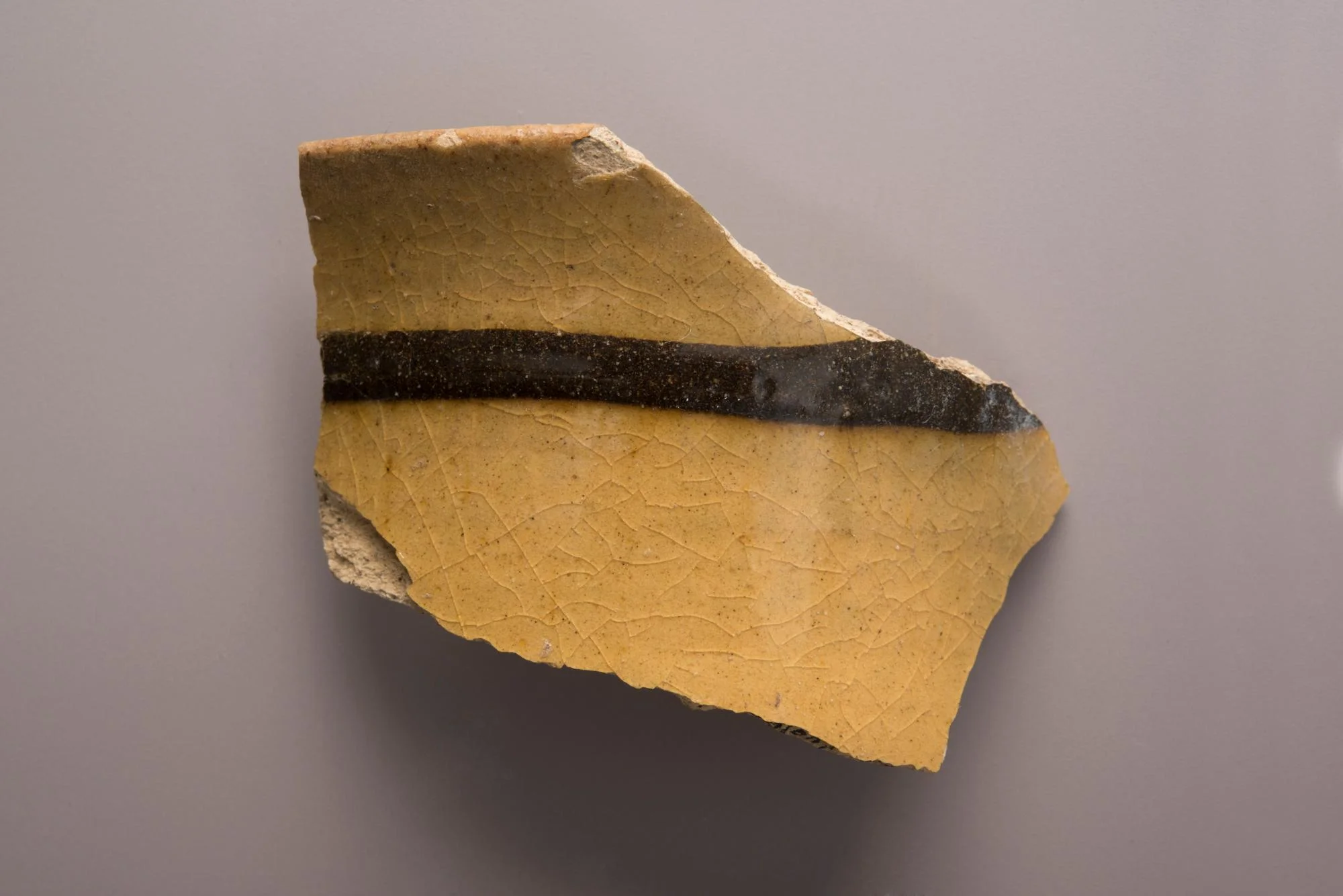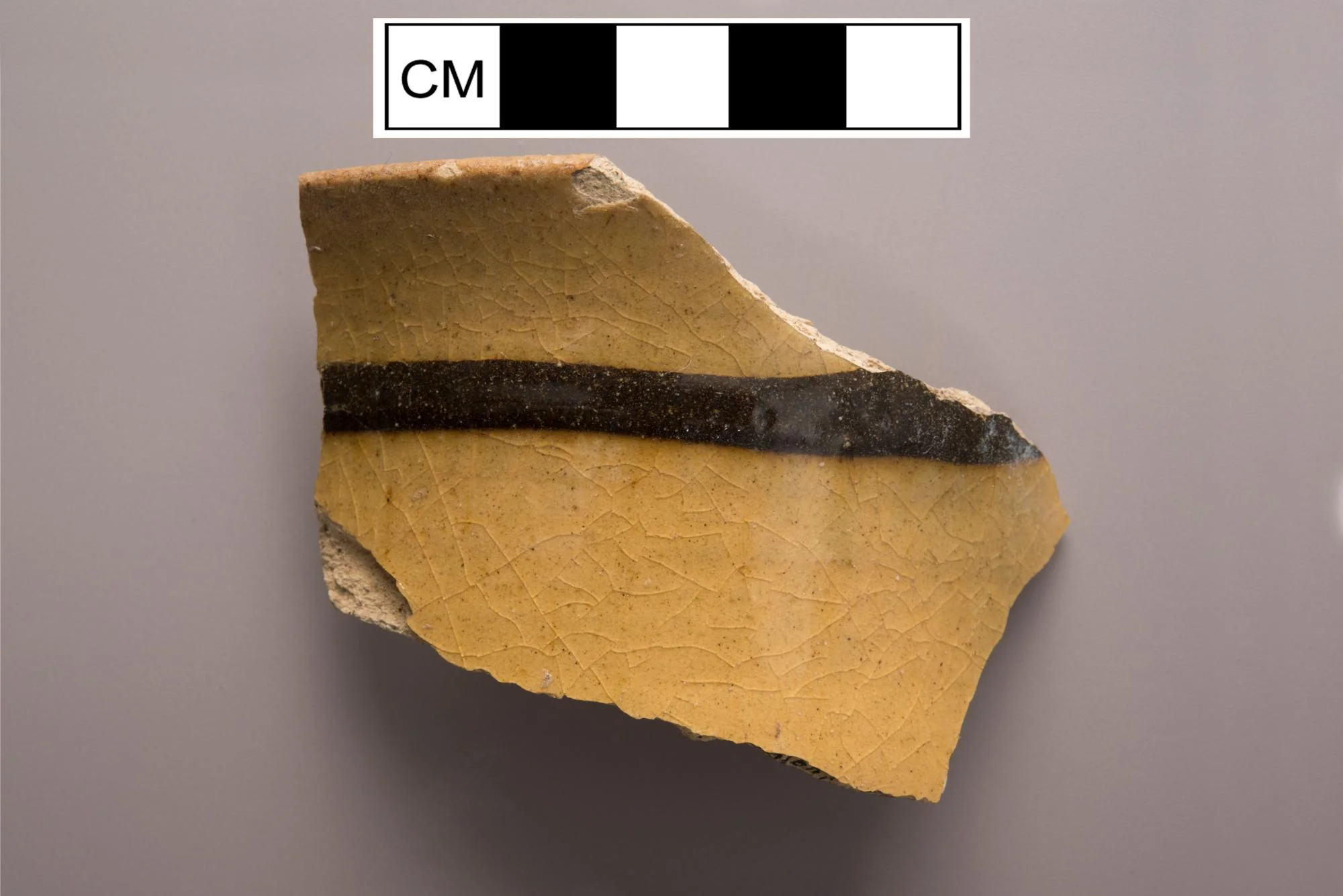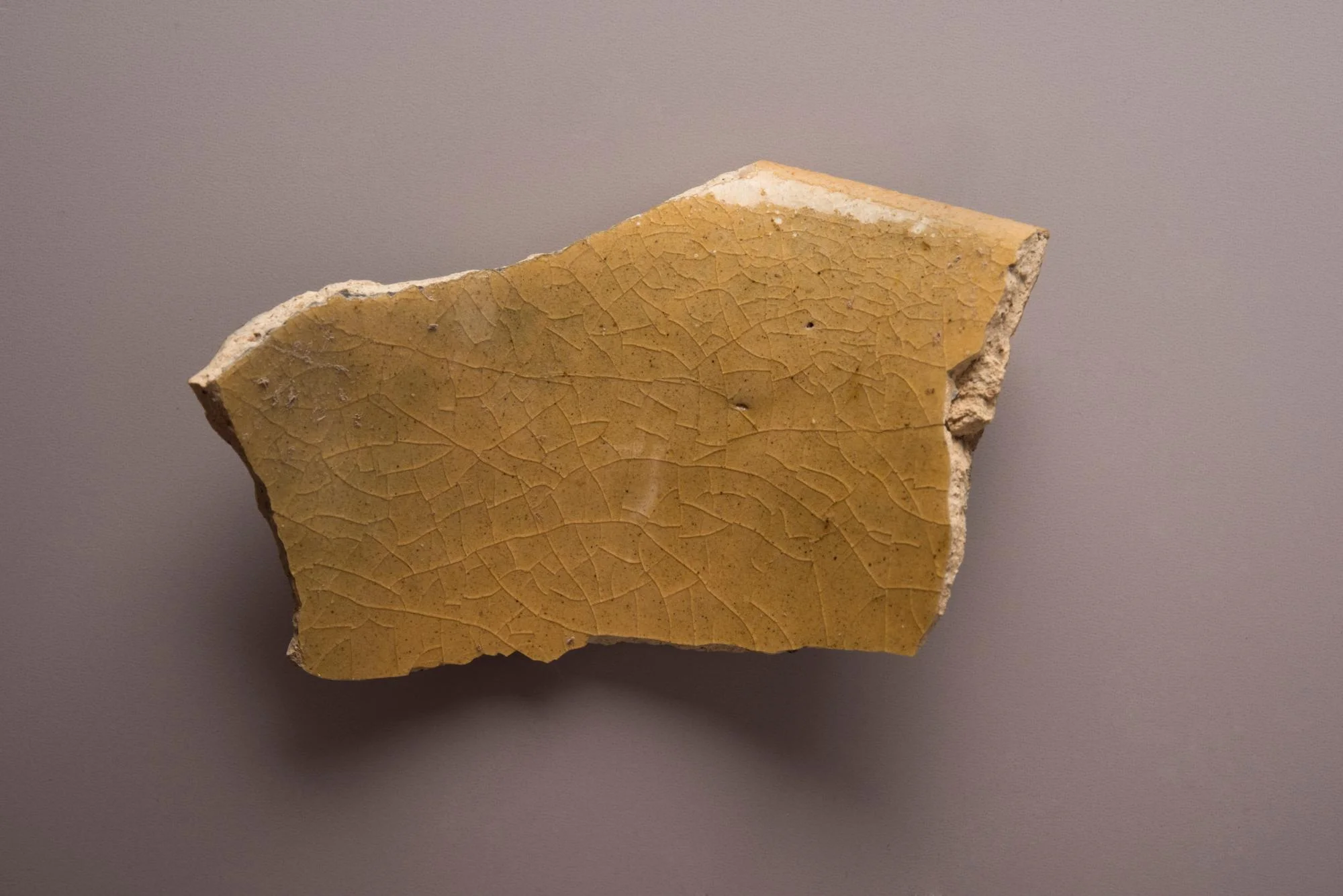Notes
This fragment is from cup form made form a ceramic archaeologists refer to as North Midlands/Staffordshire type slipware. The word “type” is used here to denote the fact that coarse, slip decorated wares were actually produced in several regions of England throughout the seventeenth and eighteenth century. One feature that unites these traditions is the technique of applying slip, or a very liquid clay, to the vessel for decoration. During production, a cup like this would be formed on the wheel, allowed to dry to a leather hard state, and then dark brown and white slips might be applied in a variety of stylistic elements to the vessel before it was dipped into a clear lead glaze and fired.
The decorative elements often took advantage of the unique properties of slip. For example, a simple trailed line just below the cup’s rim was created by careful pouring the slip onto the vessel surface.
A small hollow vessel such as this might be used to consume beverages, like cider or beer or simply water. Additionally, it could have served as a shallow bowl to consume food, porridges or stews for example, which could be spooned or sipped directly from the vessel, depending on its consistency. Slipware vessels were ubiquitous in eighteenth century homes and shops, and have been found at nearly every eighteenth century site at Mount Vernon.
Object Type
Has it Been Conserved?
No
Where Was It Found?
Project Site: House for Families [more details]
Material
Vessel
Manufacturing Technology
Form
Completeness
Decorative Technology
Decorative Patern
Decorative Notes
Plain band 01.
Date
1675-1775
Country of Origin
Dimensions
50mm x 0mm x 75mm (W x H x L)
Illustration shows object in comparison to the size of a quarter
Weight
13.9 gram(s)
Object Number
1722438. SS V.12
DAACS Number
1722438
Project: House for Families
The structure identified as the “House for Families” on the 1787 Vaughan plan likely housed the majority of the enslaved population living at the Mansion House Farm for much of the second half of the eighteenth century. The building was in existence from circa 1760 until it was demolished in late 1792 or early 1793. The archaeological evidence for the structure consisted of a brick-lined storage cellar (44FX762/40-47) measuring roughly six feet by six feet. Historically the cellar served as a handy trash receptacle once it ceased to be used for its original storage function, and through extensive excavation has yielded an extremely rich assemblage of household refuse. The analysis of these remains offers the opportunity to study important aspects of the daily lives of Mount Vernon's enslaved community.
See All Objects From this Dig


 Ceramic
Ceramic Trailed and Combed
Trailed and Combed